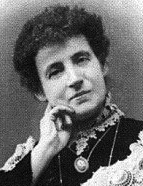

Initially published in separate articles, the studies that together make up A infanta D. Maria de Portugal e as suas damas, 1521-1577 (The Infanta Maria of Portugal and her ladies, 1521-1577) appeared as a single volume in 1902. The society in which Luís de Camões lived his life served as an opportunity “to analyse the Portuguese psyche in its female exteriorisations and outline the profile and recount the life of illustrious ladies” (A infanta D. Maria…, 1902, p.1). The way in which Carolina incorporated a new gender-based perspective in this scientific narrative is reflected in three major aspects of her analyses. It enabled her to ensure a greater veracity on the part of the historiographical account and to get closer to the truth, inasmuch as emphasising the female characters brought a series of interpersonal relations to the forefront when they would otherwise not have been addressed – the connection between Princess Maria and Camões, or the holding of royal literary evenings, for example. It also solidified a defence of individuation, which led on to a narrative linked to a theory of personality: “One notes with displeasure the tendency to make everything uniform, raising them all up to such a height that it is not possible to distinguish individual functions” (ibid, p.2). Finally, it made it possible to incorporate an increasingly sophisticated and verisimilar notion of the Portuguese psyche. Carolina sought to categorise the nation’s soul by means of its complex manifestations, and she saw differentiation based on a person’s female gender as an extension of this that ought not to be overlooked.
In the absence of written documentation, she felt that one should pay attention to the women who stood out in history: “only in the light of more or less documented events, and as seen by other temperaments, are we able to distinguish their nature” (ibid, pp. 1-2). The feminist tension led the “learned lady” and the intellectual milieu of the day to engage in a debate that Carolina waged with the sword of scholarship in her hand, for example with Oliveira Martins. On the subject of the vacuousness of education for girls, on which at the end of the day they both in fact agreed, she was incapable of not rising to the challenge: “One of the most prominent politicians of the time – the historian Oliveira Martins – has on several occasions described (…) the grotesque type of the ‘emancipated’ woman, a virago with short hair and glasses, a dark dress and large, stout boots, with her arm around a stack of books. In his eyes the supreme mission, the true role of the woman (…) can be summarised as first and foremost to be beautiful and ‘adorn the man’s life with the roses of love and tenderness’; and then to make and darn socks” (O Movimento Feminista [The Feminist Movement], 2002, p.34). In a letter he wrote to Carolina (Correspondência de J. P. Oliveira Martins, 1926, p.163), Oliveira Martins said that in his Os Filhos de D. João I (The Children of King João I) he again attached due importance to certain female figures, although he did not make the same effort to restore the darker personalities to their place in history, because of a lack of information about them: “If I did not portray dame Isabeau, it wasn’t because she was a woman; it was just because I didn’t have a single element with which to do so. You cannot accuse me of that injustice, because you recognise the role I attached to Queen Philippa’s influence over the moral education of the ‘illustrious princes’. Princess Isabel – for whose biographical portrait, I repeat, I did not have any elements, except that which is to be found in the Portuguese chronologies, which is nothing – did not play an important role in Portuguese history, although she did have one – and a very noble one – in that of Burgundy. For the same reason I limited myself to a passing reference to Charles the Bold, and indeed failed to talk about Maximilian”.
